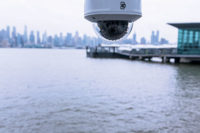N.Y. State Comptroller Report Examines the Risks of Smart Cities

A report by N.Y. State Comptroller Thomas P. DiNapoli discusses the risks and benefits of smart cites, after New York city recently began installing energy saving LED street lights and expanding wireless connectivity to certain neighborhoods.
“New technologies are reshaping how local government services are delivered. Local officials are stepping up to meet the evolving expectations of residents who want their interactions with government to be easy and convenient,” DiNapoli said. “Officials can use smart technology to trim costs, hold the line on taxes, and encourage new growth, but must be vigilant against cyberattacks. Schenectady is deploying technology to cut lighting expenses and provide greater internet access. The initiatives underway in Schenectady are a model for others to follow, and I commend Mayor McCarthy and the Schenectady City Council for prioritizing these projects. I encourage other local officials to explore options to improve their service delivery.”
“Emerging smart technologies have enormous potential to reshape how local governments deliver services. In Schenectady, we have a rich history of innovation and are proud to partner with National Grid as we deploy an advanced LED street lighting network across the entire city that will increase efficiencies, promote sustainability, and improve quality of life,” McCarthy said. “I applaud State Comptroller DiNapoli for highlighting these efforts in support of local governments throughout the state.”
“Over the last decade, we’ve seen investments that have transformed the City of Schenectady into a vibrant upstate destination,” Santabarbara said. “Smart city technology is the next step in making Schenectady an even stronger city, improving education, expanding internet access and creating new opportunities for local businesses. I’m proud to be a partner in this next investment in Schenectady’s future.”
DiNapoli’s report notes that a growing number of New York’s municipalities allow homeowners to pay their property taxes and other municipal bills, such as water, sewer and parking tickets, online. Some cities, towns and villages are also offering interactive online communication, allowing residents to directly make service requests or report code violations.
Local governments are doing more to ensure that their residents, visitors and businesses have better access to the internet. Some cities, including Albany and Buffalo, are meeting the demand for free public Wi-Fi on a large scale. Through partnerships with local private telecommunication companies, these municipalities are providing free high-speed Wi-Fi access to residents and visitors in “hotspots.”
Many municipalities have replaced traditional coin operated parking meters with electronic parking meters. The meters can have options such as allowing payment by credit or debit card, being multilingual, providing the ability to call 911, or even having cameras that record use of the parking spot and support remote e-ticketing. These systems often allow drivers to create user accounts on a smart phone app, and then enter vehicle, personal and payment information. The cities of Kingston, Niagara Falls and Albany are among those extending smart meters and mobile parking apps to improve service to customers as well as streamline parking administration.
Schenectady is working with National Grid on a demonstration project to replace 4,200 company-owned street lights with LED lights, lighting controls and infrastructure for future smart city sensors or devices. The project was funded by a $1 million grant from New York state, which was secured with the help of Assemblyman Santabarbara. A mile-long fiber optic cable running from the fire department’s main headquarters to Fire Station 3 will provide wired connectivity to the smart lighting fixtures as well as deliver wireless access for a number of potential applications.
Other municipalities have also been replacing street lights with cost- and energy- saving LEDs. Yonkers was an early adopter of the technology in 2013 partly because the city was one of the few that already owned its street lights. At the time, the city reported that switching the nearly 12,000 lights would cut its energy bill by 60 percent – a net savings of almost $1 million per year – and reduce the city’s carbon footprint by more than 2,700 metric tons annually.
Other innovations have included the installation of Global Positioning System (GPS) tracking on equipment, such as snowplows, heavy trucks and fleet vehicles. GPS tracking provides the ability to optimize service and response routes and manage workforce deployments. Syracuse is using GPS trackers on its pothole-filling trucks that collect data every time a hole is filled. Locations that require frequent filling are flagged as possibly having larger problems.
Smart technology used by local governments across the state includes:
- Drones used by police, sheriff and fire departments – as well as by non-public safety agencies in myriad ways – to assess damage from floods and natural disasters, to monitor construction and to inspect infrastructure in remote areas.
- Advanced water sensors which can detect leaks or broken lines and better meters that allow for more accurate reading and billing;
- Interactive school technologies, including:
- Parent portals that provide information about grades and assignments and facilitate direct communication with teachers;
- Notification systems that send urgent information via text or email; and
- Document sharing programs that enable students to work together and submit assignments online.
- Bike sharing programs which use phone apps and GPS to provide an alternative to driving and a recreational activity in downtown areas; and
- Vehicle-to-infrastructure technology where devices can be tuned to alert drivers to traffic, road construction and other hazards.
DiNapoli warned that local government leaders should be prepared to systematically address the heightened need for cybersecurity, particularly concerning smart infrastructure devices and related data, the report concludes.
Read the report, or go to: https://www.osc.state.ny.us/localgov/pubs/research/smart-solutions-across-the-state.pdf
Looking for a reprint of this article?
From high-res PDFs to custom plaques, order your copy today!





